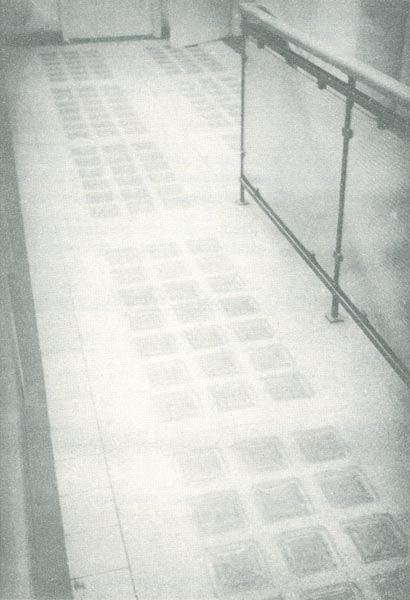4. Tank Furnace
| Capacity |
350 tons |
| |
|
| Length |
20 metres |
| Width |
6 metres |
| Depth |
1 metre 20 cm. |
The tank had a waist 3 metres 20 cm. wide, and had a square ladling end provided with five ladling holes across the end wall, with a monorail to each hole. All tank blocks were of Didier Werke Chamotte. The sides were constructed in two courses - 50 cm. deep top course on a 70 cms. deep bottom course with 4" tuck stones. The tank was heated with a “horse-shoe” flame.
Stacks There were two stacks built on the front wall of the tank. The gas and air were both regenerated and reversals took place every half hour. A Dyblie type valve for gas and Porter valve for air were used. There were no midfeather arches so that the gas burned well back in the port at the top of the upcast.
Crown Sprung type, of Dinas (silica) from Didier Werke.
Regenerators Horizontal
|
Air |
Gas |
| Length |
10 metres |
8 metres 75 cm. |
| Width |
1 metre 30 cm. |
1 metre 05 cm. |
| Height |
2 metres 42 cm. |
2 metres 42 cm. |
The regenerators ran underneath the tank and the gas and air entered underneath the working end. They were stuffed with large square bricks also by Didier Werke, giving very large straight horizontal, but no vertical passages. The bricks were 8 cm. thick.
Floaters There were two sets of two piece floaters made of Grossalmerode clay. One set was fixed midway between the front wall and the waist; the second set at the entrance to the waist. They were held by lug blocks.
Springers A feature of the tank construction was the very large size of springer block used. Each block was 64 cm. long, 12 cm. wide, and 20 cm. deep. The thickness of the nose was 22 cm. and its depth 26 cm. They were keyed together by means of a flange and rebate.
Filling Arrangement There were two small filling pockets, one at each side of the tank. Filling was done by hand. No definite percentages of cullet were filled - the largest amount of cullet available was used. The cullet and batch are shovelled from the
|




